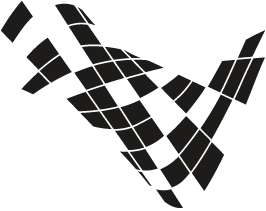I`m a Civil/Structural Engineer with two-year industrial experience in Bridge Maintenance and Structural Health Monitoring (SHM). My research interests involve Bridge Dynamics, Modal Identification, Finite Element Analysis (FEA), Pattern Recognition and Unsupervised Machine Learning. I`m currently emphasizing in data-based modelling applied on real-time and experimental bridge data, aiming for structural damage detection and identification.
Research interests
- Bridge Structural Health Monitoring (BSHM)
- Damage Detection and Condition Evaluation
- Data-based Modelling and Pattern Recognition
- Unsupervised Machine Learning and Time Series Analysis
- Bridge Modelling and Finite Element Analysis (FEA)
Current research
The project focuses on the analysis of Bridge data provided by real-time Bridge monitoring (i.e. Tamar Bridge), experimental testing and randomly generated data. In particular, advanced regression modelling (Johansen Cointegration) is applied in the attempt to eliminate the confounding impact of environmental and operational effects (EOVs) from the data, as well as provide damage sensitive features capable for novelty detection. The damage detection algorithm enhanced with ADF unit root assessment aiming to provide quantification of damage severity. The findings are of great importance, since they can be used as an automatic tool for real-time bridge health monitoring. The methodology is theoretically and experimentally validated through a series of testing in randomly generated, experimental and real-time bridge data. Some examples are provided below.
Simple Mass-Spring System (Randomly Generated Data)
 Fig. 1: Simple Mass Spring System used for data generation.
Fig. 1: Simple Mass Spring System used for data generation.
A simple mass-spring system simulated in Matlab, where the stiffness of each spring was simulated as a function of temperature. The temperature field represents the temperature data recorded during a six month real-time monitoring of Tamar Bridge. The system`s eigenfrequencies have been extracted as time histories, which can be tested employing the Johansen Cointegration and ADF algorithm developed. In order to test the capability of the algorithm to capture damage, four different damage levels (5, 10, 15 and 20 %) introduced as stiffness reduction of spring K2. The aforementioned eigenfrequency histories are illustrated in Fig. 2 (20% damage, see also Fig. 6).
Experimental Testing (Truss Bridge Model)
A laboratory model of an aluminium truss bridge (Fig. 3) is tested under varying temperature conditions (-10 to 30 oC), inside an environmental chamber (Fig. 3), while damage is simulated through the removal of bolts in the joints of the structure. The truss bridge model is tested at the George Porter`s lab at the Mechanical Engineering Department of Sheffield University. The modal properties of the structure acquired using the LMS SCADAS data acquisition system (Fig. 3 right) and used for the validation of the damage detection algorithm (The results of this experiment are not available at the moment).

Fig. 2: Introduction of 20% percentage in the K2 spring stiffness.
 |
 |
Fig. 3: Truss bridge model (-10 oC) inside environmental chamber and data acquisition using LMS SCADAS.
Real-Time Bridge Monitoring Data
For the validation of the damage detection algorithm based on real-time bridge data, the monitored cable tensions of Tamar Bridge employed. The cable tensions measured by resistive strain gauges attached into the main tensioning bolts at the deck anchor points and by load displacement strain gauges mounted on the cable (Fig. 4). The tension data extracted in KN at a sample frequency of 1 Hz. Here four cable tension series employed (Fig. 5), which were initially normalised and plotted for the available monitoring period (15/07/07 to 18/01/2010). From a preliminary analysis, temperature was observed to be the main driver of the variability observed in the series. In particular, during winter months cables are tighten (tension increase), while in summer months, cables exhibit tension relaxation. For the validation of the methodology both steady and progressive damage scenarios introduced. The results can be observed in Fig. 7.
 |
 |
 |
Fig. 4: Measuring cable tensions on the deck and abutment anchorage of Tamar Bridge.

Fig. 5: Normalised cable Tensions used for damage detection validation.
Simple Mass-Spring System
 |
 |
Fig. 6: Cointegration residual successfully captured the damaged, while ADF t-statistic used successfully to quantify different amount of damage.
For results illustration purposes for different damage scenarios introduced (5, 10, 15 and 20 %). As it can be observed in Fig. 6, damage detect successfully using cointegration residual, while ADF test t-statistic was able to capture the different damage levels. The same happens also with the results of cable tensions, where ADF t-statistic used successfully to quantify the different damage levels.
 |
 |
Fig. 7: ADF t-stats for damaged and undamaged (steady state) and progressive damaged cases.

